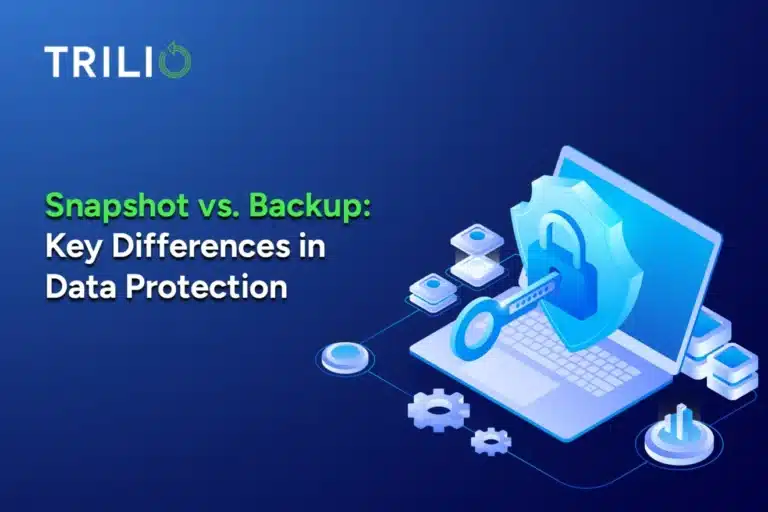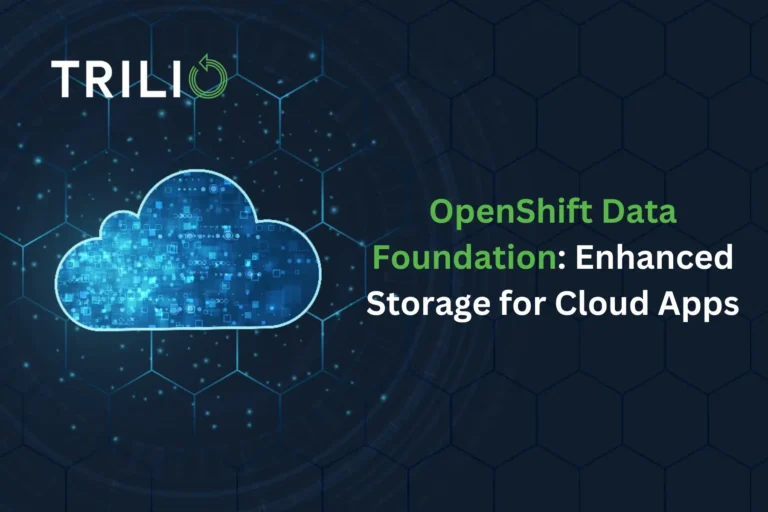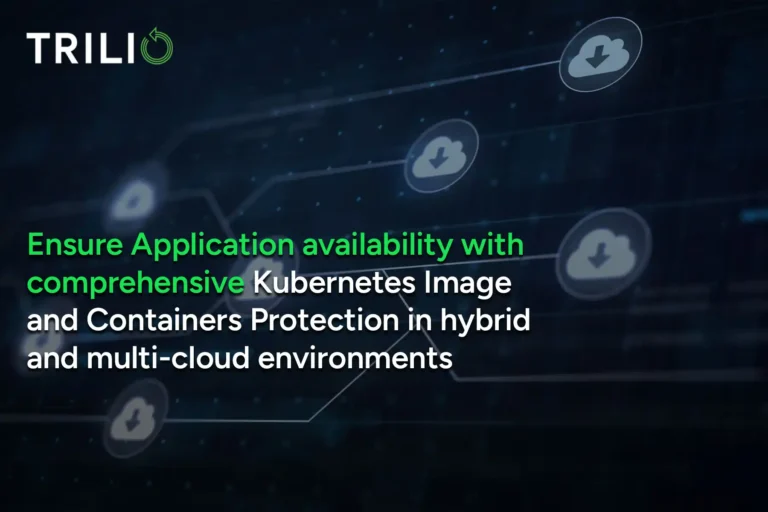Introduction
Last Tuesday, November 21st, I shared a LinkedIn post marking my first year at Trilio. It was an opportunity to express my gratitude for the incredible team I have the privilege to work with. A colleague urged me to share my observations on the market’s evolution over the past year. In discussion with him, his view was that although I may be a newbie on the block and may not have the experience that those who have been in the data protection and disaster recovery market for a long while have, I may see changes refreshingly.
So, based on this perspective, in this blog, I share my observations about Kubernetes backup and restore, OpenStack disaster recovery, KubeVirt’s emergence and momentum, and what we are seeing with VMware.
To start with, in response to an ever-changing market, we continued to build on our cloud native and application-centric approach for Trilio for Kubernetes backup solution, have delivered support for KubeVirt, added major capabilities to our OpenStack disaster recovery platform, and delivered capabilities to automate the migration from VMware to OpenStack. This work is not announced yet, but it is completed and is in use by our customer. Our goal was and is to provide advancements, with a focus on addressing challenges related to complexity (which both OpenStack and Kubernetes Platforms certainly are Oscar winners for), data protection, and efficient recovery strategies.
Below are some of my observations for Kubernetes, KubeVirt and OpenStack (the platforms are in alphabetical order), and VMware.
Kubernetes Backup and Recovery: Maturing Market and Rising Expectations
It seems like the Kubernetes backup and recovery market has continued to mature and organizations are becoming more aware of the importance of disaster recovery within their dynamic containerized environments. As months and seasons pass, organizations are starting to think about addressing this problem sooner than later. This is excellent news for all organizations. We all need to work on making our IT infrastructure much more resilient.
I have sat through many prospect and customer discussions in the past year and below are some of my observations:
Kubernetes users are expecting much better, and faster, backup and restore options for stateful applications within their Kubernetes environments.
The Kubernetes market continues on having a focus on much more application-centric recovery approaches. The goal is to ensure recovery at both the application and data levels.
Kubernetes is complex and without best-in-class Kubernetes backup and restore solutions customers continue facing challenges in setting up and managing complex disaster recovery configurations using traditional backup and recovery solutions. Those just do not work well enough.
The world is deploying and managing multi-cluster environments. Forbes article “Kubernetes In The Real World: 10 Insights From Spectro Cloud’s Report” suggests 97% of organizations have more than one cluster and 56% have more than ten.
KubeVirt A Game-Changer for Hybrid Workloads
KubeVirt, a relatively new technology that enables running virtual machines (VMs) alongside Kubernetes containers on Kubernetes clusters, has the potential to revolutionize hybrid workloads. While still in its early stages of adoption, KubeVirt addresses a significant pain point for IT organizations by unifying virtual machines and containers under a single management platform.
Trilio’s early adoption of KubeVirt support demonstrates our commitment to staying ahead of the curve and providing cutting-edge solutions for our customers. We have already conducted several successful Proofs of Concept (PoCs), which is a great sign that the market is maturing fast. We expect KubeVirt to gain widespread adoption, particularly among large IT organizations.
One of the key features we have implemented is Continuous Restore which provides a very fast Kubernetes disaster recovery solution. Continuous Restore makes other Kubernetes clusters a backup target, rather than just backing data and apps up to backup storage. With Trilio’s Continuous Restore, pre-staged data from another cluster allows for fast Kubernetes disaster recovery. Where other solutions expect you to recover from storage during a Kubernetes failover, Trilio’s solution just requires the time it takes for your applications containers to respawn, dramatically improving your Kubernetes disaster recovery times.
OpenStack Disaster Recovery: A Resurgent Market with Renewed Focus
The OpenStack disaster recovery market, which seemed to have been stagnant in 2021/2022, is making a comeback and is growing again with an increased emphasis on streamlining recovery processes and improving compatibility across diverse OpenStack deployments.
Notable advancements, by vendors like us, have been made in the automation and orchestration of disaster recovery processes within OpenStack environments, streamlining operations for better efficiency.
Fast recovery and data integrity during recovery have been a focus, reducing data loss and improving recovery times for OpenStack users.
Standardizing disaster recovery across the spectrum of diverse OpenStack deployments is a hurdle for customers when they try to use traditional backup software for OpenStack environments because of compatibility issues across different versions and environments.
Customers are realizing that integrating their OpenStack disaster recovery solution with the wider OpenStack ecosystem, components and versions poses major challenges, especially when users require seamless interoperability. More and more customers are looking into Disaster Recovery Solutions that are integrated with OpenStack out of the box.
VMware: Customer Concerns and Migration Initiatives
Even though Broadcom CEO has given three reasons for the VMware customers not to panic , Broadcom CEO offers 3 reasons VMware customers shouldn’t panic, reality is many customers are getting renewals proposals that are 30%-40% higher than what they had. As a results of this we , and Red Hat, are seeing increased market demand for migration of VMware to OpenStack Migrate from VMware to Red Hat OpenStack . This is a joint offering which combines our OpenStack Disaster Recovery Platform, which now includes VMware migration capabilities, with Red Hat’s world class consulting group to help customers migrate and save a lot of money.
Conclusion
It is great to see the evolution of the data protection and disaster recovery market, how buyers are getting much more educated, and the number of meaningful initiatives that are being funded.
At Trilio we continue on investing in our Kubernetes backup and restore, OpenStack disaster recovery, and KubeVirt platforms so we can stay ahead of customer needs.
It would be great if you would send us your ideas about features you would like to see. We would be happy to set up a (non-sales) technical presentation, sharing our solution(s) with you. We also offer PoCs to those interested. These are supported by our professional services team, ensuring you make the most out of your time with Trilio. Ping us if interested.
Predictions for 2024
In a couple of weeks, I will do another blog with my predictions for 2024. I promise I will circle back a year from then and grade myself.




